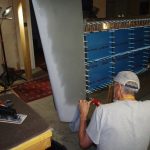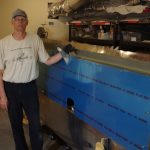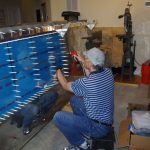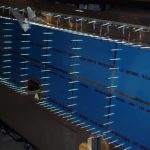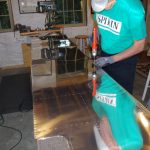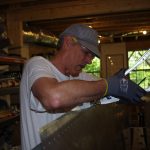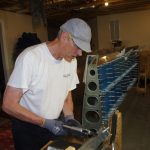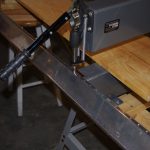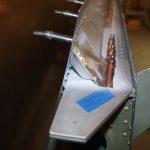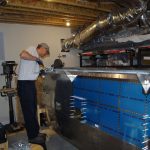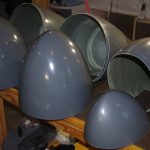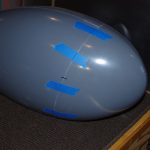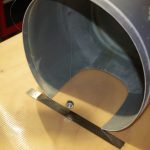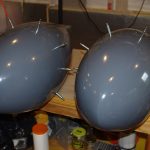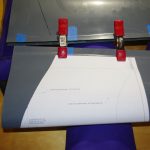Once the bottom skins are ready for installation, work can begin on the wing tips.
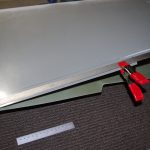 The wing tip edges must be shortened to fit into the roughly 3/16″ (10mm) gap between the last wing rib and the skin edge.
The wing tip edges must be shortened to fit into the roughly 3/16″ (10mm) gap between the last wing rib and the skin edge.
After initial trimming for fit, the wing tip is #40 match drilled with the top and bottom skins. Start at the forward portion of the wing and work backward (up in the photos).

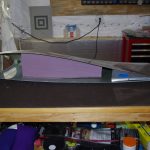 Other builders highly advise reinforcing the very thin fiberglass web in the wing tips to prevent ‘oil canning’ both during flight and on the ground (spectators leaning on your wing). This shows a provisional fit of 1″ rigid foam, which eventually will be glassed into place mid-section of the wing tip.
Other builders highly advise reinforcing the very thin fiberglass web in the wing tips to prevent ‘oil canning’ both during flight and on the ground (spectators leaning on your wing). This shows a provisional fit of 1″ rigid foam, which eventually will be glassed into place mid-section of the wing tip.
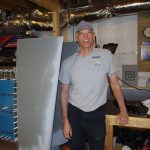 While the wing tips at this point are far from completion, having them provisionally hung on the wings is a great feeling. The wing components are starting to look like an actual part of the aircraft.
While the wing tips at this point are far from completion, having them provisionally hung on the wings is a great feeling. The wing components are starting to look like an actual part of the aircraft.
